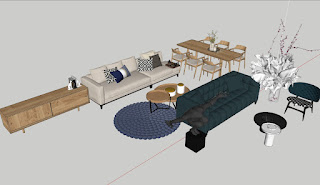Small Wooden Tables: Optimizing Space in Apartments and Dormitories
The constrained living spaces typical of apartments and dormitories often necessitate a meticulous approach to furniture selection. While functionality remains paramount, aesthetic appeal and space-saving design are equally crucial. Small wooden tables emerge as a versatile solution, offering a blend of practicality and style without compromising valuable square footage. This comprehensive guide explores the multifaceted aspects of selecting the ideal small wooden table for compact living environments, focusing on considerations of size, style, material, and functionality.
Assessing Your Space and Needs
Before embarking on the quest for the perfect small wooden table, a thorough assessment of your available space and specific needs is paramount. This preliminary step will significantly streamline the selection process, preventing impulsive purchases that may ultimately prove unsuitable. Consider the following key factors:
Space Constraints and Dimensions
Accurate measurements are crucial. Carefully measure the area designated for the table, accounting for sufficient clearance for comfortable access and movement around the piece. Consider not only the table's footprint but also its height, ensuring it aligns harmoniously with existing furniture and your personal ergonomic requirements. A table that's too large will overwhelm the space, while one that's too small might lack the necessary surface area for its intended purpose.
Intended Use and Functionality
The table's intended function significantly influences its optimal size and design. A small table intended solely for a bedside lamp and a book will have different requirements than one used for dining, studying, or craftwork. Consider the following potential uses:
- Bedside Table: A narrow, compact design with a small drawer or shelf for storage is ideal.
- Study Table: Prioritize a stable surface area large enough to accommodate a laptop, books, and writing materials. A drawer or shelf for stationery is a valuable addition.
- Dining Table (for two): Opt for a slightly larger table with sufficient space for place settings and possibly a small centerpiece.
- Work Table: A small, sturdy table with ample surface area for crafting, hobbies, or other work-related activities.
Aesthetic Considerations and Style
The visual appeal of the table should complement the overall aesthetic of your living space. Consider the existing color palette, furniture style, and overall décor. Do you prefer a rustic, minimalist, modern, or traditional look? Choosing a table that harmoniously integrates with your existing furnishings will create a cohesive and visually pleasing environment.
Choosing the Right Material and Construction
The choice of wood type and table construction significantly impacts durability, aesthetics, and longevity. Careful consideration of these factors will ensure your small wooden table serves its purpose for years to come.
Wood Types: A Spectrum of Options
Various wood types offer distinct aesthetic and performance characteristics. Some popular choices for small wooden tables include:
- Pine: A relatively softwood, pine offers affordability and a light, versatile aesthetic. It is suitable for various styles but might require more care to prevent scratches.
- Oak: A hardwood known for its durability, strength, and rich grain patterns. Oak tables exude a sense of timeless elegance.
- Maple: A hardwood with a smooth, fine grain and a lighter color than oak. Maple tables offer a clean, modern aesthetic.
- Cherry: A hardwood prized for its reddish-brown hue and warm, inviting appearance. Cherry tables are durable and age gracefully.
Beyond the wood type, consider the finish. A clear coat protects the wood's natural beauty while a painted or stained finish offers opportunities for customization and stylistic integration.
Construction and Durability
Sturdiness and stability are critical factors, particularly in high-traffic areas or if the table is intended for heavier use. Check for robust joints, solid construction, and a stable base. Avoid tables with flimsy legs or weak supports. The overall weight of the table also influences its stability; a heavier table is generally more stable than a lightweight one. Examine the construction for any visible signs of poor craftsmanship, such as loose joints or uneven surfaces.
Exploring Design and Features
Small wooden tables come in a diverse range of designs, each offering unique features and functionalities to cater to various needs and preferences.
Folding Tables: Space-Saving Solutions
Folding tables offer exceptional space-saving capabilities, easily stored away when not in use. They are ideal for small spaces where versatility and adaptability are paramount. However, their folding mechanisms should be robust and easy to operate, ensuring stability and durability when deployed.
Tables with Storage: Maximizing Functionality
Tables with drawers, shelves, or cubbies provide valuable storage space for books, stationery, or other small items. This feature enhances the table's functionality, maximizing its usefulness in limited spaces.
Height-Adjustable Tables: Adapting to Your Needs
Height-adjustable tables offer unparalleled flexibility, allowing you to customize the table's height to suit your ergonomic needs and the intended task. These are especially beneficial for individuals who work from home or use the table for multiple purposes.
Maintenance and Care
Proper maintenance is essential to prolong the lifespan and preserve the beauty of your small wooden table. Regular dusting and occasional cleaning with a suitable wood cleaner will prevent dust accumulation and maintain its aesthetic appeal. Avoid placing hot items directly on the surface and use coasters to protect against water rings. Addressing any scratches or damage promptly will help prevent further deterioration.
In conclusion, selecting a small wooden table for an apartment or dormitory requires careful consideration of various factors. By understanding your space limitations, intended use, and aesthetic preferences, and by carefully evaluating the material, construction, and design features, you can choose a table that seamlessly blends functionality, style, and durability, enhancing your living space for years to come.


































